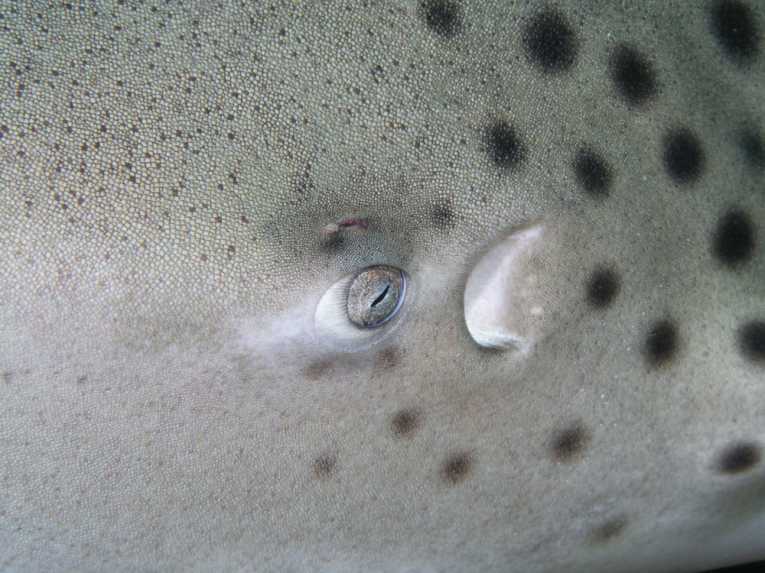Special skin helps sharks swim faster, but artificial human 'shark skin' swimsuits aren't quite as effective, says an American scientist. Shark skin is coated in sharp scales, similar to teeth, called dermal denticles (or (placoid scales) that affect the flow of water to reduce drag and increase thrust.
The Speedo Fastskin II swimsuit aims to mimic shark skin and improve swim times but Harvard University's George Lauder says the idea behind the high-tech swimsuit needs more consideration, saying: "All of the shark skin studies were done on flat shark skin mimics that were held straight and immovable. But shark skin moves.".
Talking of the artificial swimsuit, George Lauder says, "In fact, it's nothing like shark skin at all. What we have shown conclusively is that the surface properties themselves, which the manufacturer has in the past claimed to be bio-mimetic, don't do anything for propulsion."
However, the Speedo swimsuit may improve swimmers' performances in other ways, he says.
"There are all sorts of effects at work that aren't due to the surface. Swimmers who wear these suits are squeezed into them extremely tightly, so they are very streamlined. They're so tight could actually change your circulation, and increase the venous return to the body, and they are tailored to make it easier to maintain proper posture even when tired. I'm convinced they work, but it's not because of the surface."
George Lauder and Masters student Johannes Oeffner examined how sharkskin reacts with water and what the effect is of its motion. Their discoveries, just published in The Journal of Experimental Biology, show how shark skin increases thrust.
The pair bought fresh shark skin from a Boston market and removed parts, including the denticles, and attached to rigid aluminium foil. This was place in a flow tank, wiggled to mimic the movement of a fish and its speed measured.
The denticles were then sanded smooth and the foil model was set up again. Its speed was measured in the same way and found to be faster, which proved the shark skin's denticles impeded a rigid swimmer.
"But then we remembered our premise that the sharks aren't rigid," says George Lauder, so they repeated the experiment but this time flexing the model like a real fish.
The effect was dramatic with a 12.3% increase in speed over the smoothed skin.
The pair the tested the swimming performance of swimsuits that mimic shark skin - a sharp-edged riblet design and the Speedo Fastskin FS II fabric. Although the riblet design increased the flexible foil's swimming speed by 7.2%, the Speedo fabric made no difference.
The scientists then examined how shark skin affects fluid flows around the body. They returned the flexible shark skin foil to the water and used lasers to look at its swirling motion. They found that as well as reducing drag, the skin created extra thrust.
George Lauder says, "That's the number one surprise. It's not just the drag-reducing properties, but the denticles alter the structure of flow near the shark skin in a way that enhances thrust."
The scientist is now hoping to design physical models to see how changes in the arrangements of denticles affect fluid flows over the skin. He also hopes to build a computational model to learn more about the beneficial effects of the skin on thrust and drag.
The research, entitled The hydrodynamic function of shark skin and two biomimetic applications, was financed by America's National Science Foundation.










